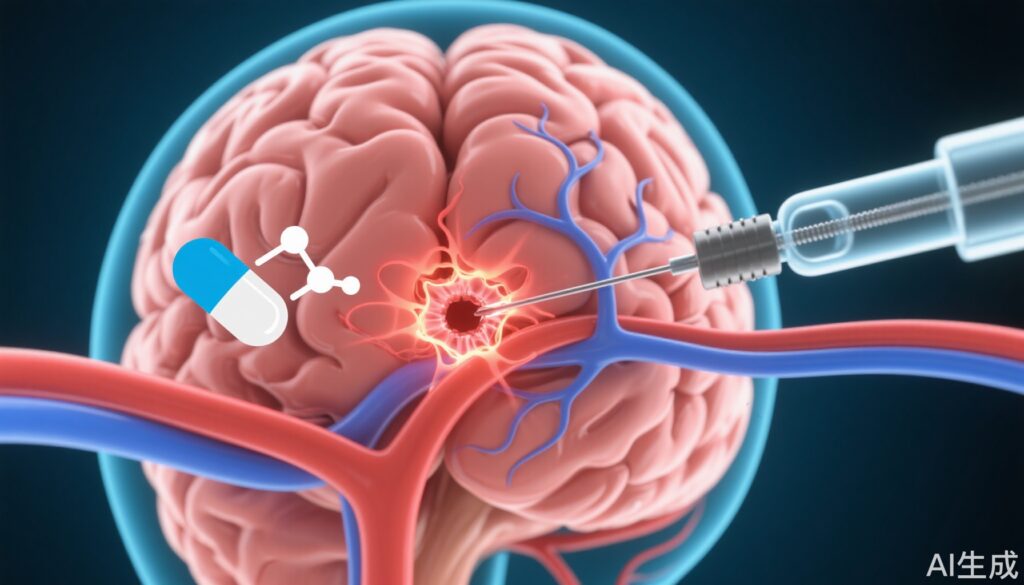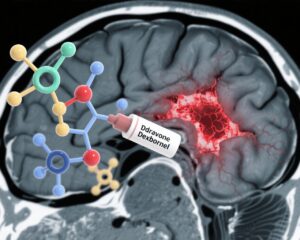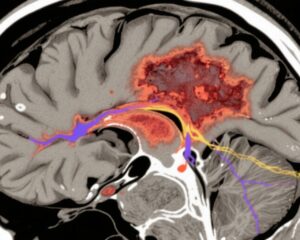Study Background and Disease Burden
Acute ischemic stroke (AIS) resulting from distal medium vessel occlusion (DMVO) in the middle cerebral artery branches represents a significant clinical challenge with increasing recognition due to advances in imaging and endovascular approaches. Unlike large vessel occlusions (LVO), DMVOs involve smaller caliber arteries and historically have had limited therapeutic options beyond intravenous thrombolysis (IVT). Mechanical thrombectomy (MT) has revolutionized the management of LVO strokes by providing rapid vessel recanalization and improving outcomes; however, its role in DMVO remains less clearly defined. Aspirin, as a widely used antiplatelet agent, is often prescribed for vascular prophylaxis but its influence on stroke outcomes when combined with MT in DMVO is unclear. Given the balance between ischemic protection and hemorrhagic risk, understanding the impact of pre-stroke low-dose aspirin (75-100 mg) on MT efficacy and safety in DMVO is clinically vital to inform treatment strategies.
Study Design
This study analyzed data from the Multicenter Analysis of primary Distal medium vessel occlusions: effect of Mechanical Thrombectomy (MAD-MT) registry, a multinational, multicenter database. The investigators conducted a propensity score-weighted analysis including 1354 patients with AIS due to DMVO treated with MT. The population was stratified into two groups: those on pre-stroke low-dose aspirin and those without prior antiplatelet therapy. The primary endpoint was functional independence, defined as modified Rankin Scale (mRS) scores 0-2 at 90 days post-stroke. Secondary endpoints included excellent functional outcome (mRS 0-1), 90-day mortality, and the National Institutes of Health Stroke Scale (NIHSS) score measured one day after MT. Safety outcomes focused on hemorrhagic complications, most notably symptomatic intracerebral hemorrhage (sICH).
Key Findings
Among the cohort, 150 patients were on pre-stroke low-dose aspirin. Baseline intravenous thrombolysis administration was similar between groups (45% in aspirin vs 47% in no antiplatelet; p=0.78). Notably, the aspirin group had a significantly higher use of aspiration thrombectomy as first-line technique (24% vs 18%; p=0.002).
Procedural times were shorter in the aspirin group, with median onset to arterial puncture at 230 minutes vs 270 minutes (p=0.007) and onset to recanalization at 294 minutes vs 330 minutes (p=0.006). Furthermore, general anesthesia was more frequently employed in the aspirin group (58% vs 26%; p<0.001).
Functional outcomes at 90 days favored aspirin-pretreated patients, with higher odds of achieving mRS 0-2 (OR=1.89; 95% CI: 1.14-3.12; p=0.013). The proportion reaching mRS 0-1 was also higher but did not reach statistical significance (OR=1.62; 95% CI: 0.98-2.67; p=0.06). Day 1 post-MT NIHSS scores were significantly lower in the aspirin group (median 4 vs 6; p=0.018), indicating better early neurological recovery. Recanalization success, measured by TICI 2b-3 and 2c-3 rates, was comparable between groups.
Mortality at 90 days was reduced in aspirin users (13% vs 17%; OR=0.56; 95% CI: 0.32-1.00; p=0.048). Safety analysis revealed a significantly lower incidence of hemorrhagic infarction type 1 (HI1) intracerebral hemorrhage (ICH) in the aspirin group (OR=0.12; 95% CI: 0.05-0.31; p<0.001) but a higher occurrence of parenchymal hematoma type 2 (PH2) ICH (OR=5.80; 95% CI: 2.43-13.8; p<0.001). Rates of other hemorrhagic subtypes, including HI2, PH1, and subarachnoid hemorrhage (SAH), did not differ significantly.
Expert Commentary
The findings from this robust multinational, propensity-adjusted analysis add meaningful insight into the clinical impact of pre-stroke aspirin in the context of MT for DMVO strokes. Aspirin’s antiplatelet effect likely contributes to improved microvascular perfusion and may reduce thrombotic burden, reflected in faster procedural times and better short-term neurological status. Although the heightened risk of more severe parenchymal hemorrhage (PH2) warrants caution, the absence of increased sICH and overall reduced mortality supports aspirin’s relative safety in this setting.
It is important to note that the study was observational, and residual confounding cannot be ruled out despite propensity weighting. The higher use of general anesthesia and aspiration technique in the aspirin group might reflect operator choice influenced by clinical or anatomical factors not fully accounted for. Additionally, long-term neurocognitive outcomes were not assessed.
Current stroke guidelines do not provide firm recommendations regarding pre-stroke aspirin in patients eligible for MT at the medium vessel level. These findings suggest potential benefit and safety but call for prospective clinical trials to validate these associations and optimize peri-procedural management.
Conclusions
Pre-stroke low-dose aspirin administration in patients with AIS due to DMVO treated by MT is associated with superior 90-day functional outcomes and reduced mortality without a significant increase in symptomatic hemorrhagic complications. These results advocate for the safe continuation of low-dose aspirin in patients at risk of or presenting with DMVO stroke and underline the need for further prospective studies. Integrating aspirin management strategies into thrombectomy protocols could potentially enhance recovery while balancing bleeding risk in this distinct stroke subgroup.
References
Salim HA, Yedavalli V, Milhem F, et al. Efficacy and safety of mechanical thrombectomy in distal medium middle cerebral artery occlusion ischemic stroke patients on low-dose aspirin. Int J Stroke. 2025 Jul;20(6):669-678. doi:10.1177/17474930251317883 IF: 8.7 Q1 . Epub 2025 Jan 28. PMID: 39873268 IF: 8.7 Q1 ; PMCID: PMC12182599 IF: 8.7 Q1 .


